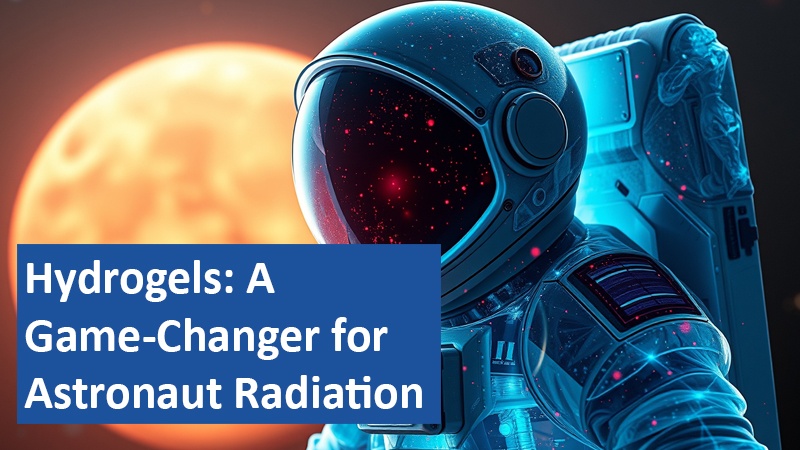
Scientists at Ghent University in Belgium are pioneering an innovative solution to one of space exploration’s greatest challenges: protecting astronauts from harmful cosmic radiation. Their groundbreaking research focuses on hydrogels, water-absorbing materials that could revolutionize radiation shielding in space.
######################################################
Now exclusively try Amazon Prime and Prime Video free for 30 days!
##########################################################
The Invisible Threat Beyond Earth’s Atmosphere
In the vast expanse of space, astronauts face an invisible yet potent danger: cosmic radiation. On the International Space Station, a six-month stay exposes crew members to about 72 millisieverts (mSv) of radiation, equivalent to several years of exposure on Earth. For future long-duration missions, such as those to Mars, the risk increases dramatically, potentially exposing astronauts to over 1,000 mSv over a three-year journey.
Water: Nature’s Shield Against Cosmic Rays
Water has long been recognized as an effective radiation shield due to its density and high hydrogen content5. However, using liquid water in space poses significant challenges, including potential leaks and uneven distribution in zero gravity. Enter hydrogels: materials that can absorb and retain large amounts of water in a stable, non-flowing form.
Superabsorbent Polymers: The Key to Flexible Protection
Researchers are focusing on superabsorbent polymers (SAPs) that can store several hundred times their own weight in liquid1. These polymers form hydrogels when swollen, offering a versatile solution for various applications in space. The team at Ghent University is leveraging 3D printing technology to create custom-shaped hydrogel structures optimized for spacesuits and spacecraft.
From Everyday Products to Space Innovation
“The beauty of this project is that we are working with a well-known technology,” explains Lenny Van Daele, a researcher on the project. “Hydrogels are found in many things we use every day, from contact lenses to diapers and sanitary products.” This familiarity with the technology provides a solid foundation for its adaptation to space applications.
The potential of hydrogels extends beyond radiation protection. Malgorzata Holynska of the European Space Agency suggests they could also serve as water reservoirs for unmanned missions, once methods for retrieving water from the hydrogel are optimized. This dual-purpose capability could prove invaluable for future space exploration endeavors.
The development of hydrogel-based radiation protection could mark a significant leap forward in making long-duration space missions safer and more feasible. As we look to the stars and plan ambitious journeys to Mars and beyond, innovations like these will play a crucial role in safeguarding the brave explorers who venture into the cosmic unknown.
How might the application of hydrogels in space travel inspire new protective technologies for use on Earth? And what other everyday materials might hold the key to solving complex space exploration challenges?
Based on content from www.space.com and own research.